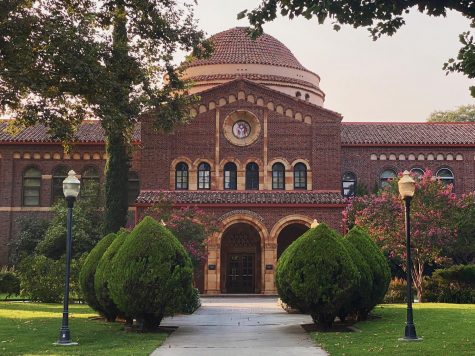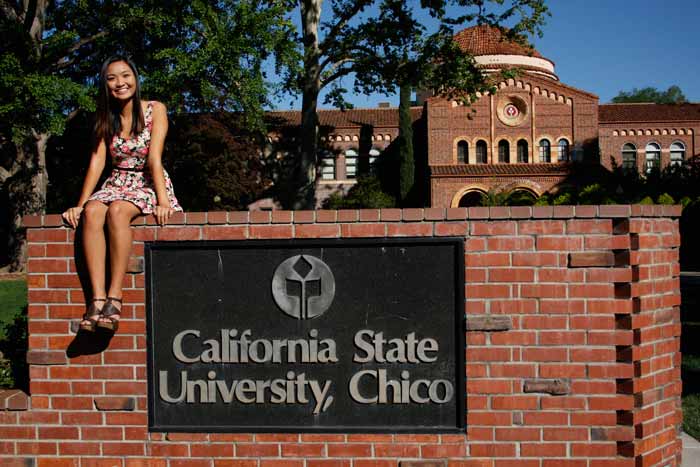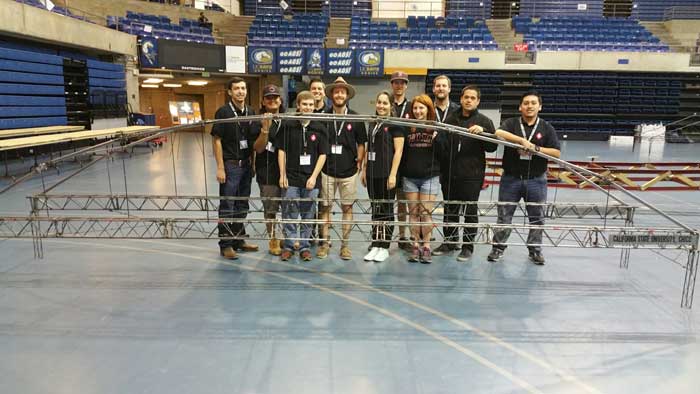Published 2010-10-19T15:52:00Z”/>
Sophia Horn
When discussing college sports, most people think about schools that are Division I or are home to a well-known football team.
However, universities such as Chico State have a balance of sports and education that has some advantages over these bigger or more widely known schools.
Because Chico State is a Division-II school, the athletes are able to play the sport they choose while still attending all of their classes and being a regular student.
Taylor Lambert, a pre-nursing major, plays intramural soccer at Chico State and had to make a difficult decision when picking which school to attend, he said.
He had the option of joining track and field for Chico State, but decided to focus on academics instead.
“I wanted to go to college and play a sport like I did in high school, but in college it seems like you have to focus on either sports or academics, so I chose the option of intramural,” Lambert said.
Senior Taylor Lydon, who plays for Chico State’s women’s basketball team, thinks she made the right decision picking a Division-II school, she said.
“Division-II schools are a lot more focused on the overall schooling, and it is a less demanding commitment compared to Division I,” Lydon said. “Division I is more like a business, where I think Division II is more into personal relationships and future life skills.”
Some student athletes admit that they did not initially consider the school’s division a factor.
Chico State cross-country runner Jeremy Brummitt did not take the school’s division into consideration, he said.
“It was what team fit best with me,” Brummitt said. “Chico State competes like a Division-I school, so it was perfect.”
Other student athletes took the division into consideration for reasons other than just the financial aspect.
Freshman Tommy McGuan, another member of the cross-country team, enjoys attending a Division-II school as well.
“I picked a Division-II school because it seemed more family-based than Division-I schools,” McGuan said.
The school’s division can be a major factor for an athlete to take into consideration.
Division-II schools have to sponsor at least five sports for men and five for women, or four for men and six for women, according to the NCAA website.
There must be two team sports for each gender, and each playing season must be represented by each gender.
In contrast, Division-I schools have to sponsor at least seven sports for men and seven for women, or six for men and eight for women, with two team sports for each gender.
Division II is nestled between the high-profile appeal of Division I and the cachet of Division III’s non-scholarship approach.
In a sense, it has the downside of both divisions – the cost of scholarships without the appeal of Division I, according to David Moltz from Inside Higher Ed.
However, at Chico State there are certain organizations that promote a higher-division atmosphere, such as The Rowdy Red, which encourages an abundance of students to attend sporting events to raise the popularity of games.
Division-I schools tend to receive more money for their athletes because of the popularity of the sports, the revenue produced from sporting events, thanks to their ability to produce large scholarships for the student athletes, according to the NCAA website.
These schools can afford to pay for a student’s tuition, room and board, books and other fees, while Division-II schools can only afford to pay for a student’s tuition, fees and books.
This means that attending a Division-I school becomes that much more attractive to students looking for a place to stay while playing sports.
Division-I schools receive more money because Division-II schools do not need higher funds for athletic scholarships and game attendance, according to the NCAA website.
Being a Division-II school, Chico State does not receive as much money as it could when it comes to athletics. However, there may be some benefits to that.
Mitch Cox, the assistant athletic director, is a Chico State alumnus, has been involved with college athletics for 20 years and enjoys the aspect of being a part of a Division-II school, he said.
“Since we’re not a Division-I program, student athletes are not separated from the student body and are regular students who just happen to be in sports,” Cox said.
This outlook reflects how Division-I schools have athletes focus primarily on sports.
Division-I schools do not have a budget, according to the NCAA website.
They are able to scout anywhere they desire to handpick the athletes they want wearing their school’s jersey.
In Division-II, however, the athletes choose the school best suited for them.
Sophia Horn can be reached at













